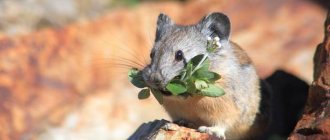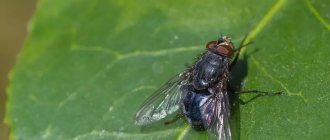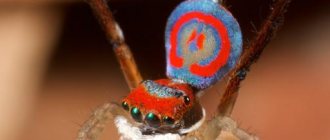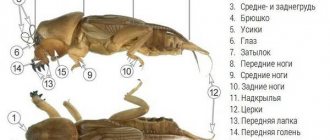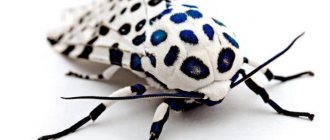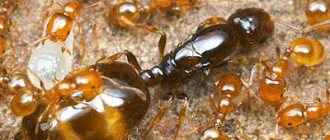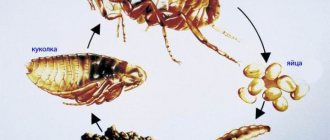The fungus belongs to the mold species. Mucor feeds on human, plant and animal waste. It has both beneficial and negative properties and an interesting structure.
In this article we will analyze the properties and structure of the mold fly fungus. Let's find out what its danger is, and also figure out what the mycelium of a mold fungus is and what color it has.
Do we know each other?
A common and unpleasant phenomenon for humans is the appearance of mold on baked goods. It seems that there is nothing dangerous in white mold, or mucor, for the human body. Today, scientists count approximately 60 varieties of these crops.
Some are actively used in various types of human activities, but there is a separate group of species that are very dangerous for the human body. Now let’s analyze this strange task of nature and identify its benefits and harms.
Looking through the microscope...
What can you see when looking at mucor under a microscope? The structure of the mushroom is called mycelium. It looks like complex cells with many branches and nuclei. Also, the structure of mucor includes hyphae, thanks to which it firmly holds in the substance where its spores settle. The hyphae appear as thin whitish threads. The closer the observer's gaze “moves” to the peripheral part of the fungus, the thinner these threads become.
With the naked eye we can see the Mukora strategists. This is the same “shaggy” mold, consisting of thin hairs. It is responsible for the reproduction process, and the height of one hair under favorable conditions for the development of mold is from 2 to 3 cm. When the fungus begins to multiply, each hair “acquires” a separate box. There are spores inside it.
Description
The mucor mushroom belongs to a genus called mold. Food, soil, organic matter of plant origin are places where it can occur in the event of improper and careless storage of products.
The initial stage is characterized by the appearance of whitish fluff, which is why the specimen is called white mold. Further reproduction is determined by the formation of sporangia as the clump matures. The sporangia are grayish or beige in color and are black at maturity.
Department – Zygomycota. Some experts are of the opinion that this species existed during the Proterozoic era. The mold species tends to feed on waste products of human, plant and animal life.
Life activity of mucor
The vital activity of the fungus comes down to the complete decomposition of dead remains. This organism is unpretentious to the external environment: its life requires moisture and warmth. The only requirement that must be met for full life is access to nutritious ingredients.
If mucor finds itself in a nutrient-poor environment, for example, in concrete, it is covered with a fairly dense shell and “falls asleep” until conditions suitable for it are created. The slowdown in vital activity occurs due to the reactivation of metabolic processes in the fungal cytoplasm.
Structure
The structure of the mucor mushroom is very interesting. Experts use a microscope to examine the colonies of the specimen, which have a rather interesting appearance.
What color is the mucor mycelium and what is the mycelium of the mold representative? Its basis is mycelium, which consists of branched cells with a large number of nuclei. The colony usually gives off beige or gray shades, which tend to multiply very quickly, that is, grow.
Hyphae are white threads that help anchor the body in the soil. They are capable of branching and exhausting towards the edge of the mycelium. The mycelium does not contain chlorophyll and uses ready-made organic substances for nutrition.
The surface of the mold, which is visible without various equipment and devices, contains sporangiophores. Sporangiophores are small hairs that grow from the main bodies.
Comfortable conditions allow the parasite to grow hairs several centimeters in height. Sporangia is a capsule that contains the optimal number of spores for reproduction. It appears as the specimen matures on the surface of its sporangiophores.
At this stage of development, it looks like a pillow covered with pins. This is the reason why the specimen has another name - capitate mold. This metamorphosis can be noticed only with a high-quality microscope, since it is impossible to catch it with the naked eye.
The sporangium shell bursts at the final moment of development and growth. Mature spores that are ready to multiply and create next generations can now scatter in different directions. This whole process has microscopic dimensions, which can only be seen with special equipment and the ability to handle it correctly.
Thus, the structure of the mold fungus mucor is very interesting and has its own characteristics. Mucor mushrooms are a very interesting variety that is subject to careful study and analysis.
What mucor looks like under a microscope
Fungi are eukaryotes - organisms whose cells contain a formed nucleus.
The cell contains:
- cell membrane;
- cytoplasm and nucleus that make up the protoplast;
- vacuoles are cellular elements responsible for intracellular digestion.
The cell membrane of mucor contains chitosan. The latter perform a supporting function. Thus, the framework of the mycelium and hyphae is the cell membrane, which can calcify during life. The structure of the fungus contains a plasmalemma that delimits the protoplast. It is necessary to control substances entering the cell. The main energy substance is mitochondria, immersed in the cytoplasm along with other organelles.
Another component of the protoplast is the nucleus. A significant number of nuclei are part of the mycelium - the body of the fungus. The role of roots is performed by hyphae. They can be separated by partitions - septa, which are absent in mucor. Therefore, this representative consists of nonseptate hyphae. In terms of the growth rate of hyphae, mucor fungi are fast-growing.
Reproduction
There are two ways to reproduce this representative of a huge kingdom:
- Sexual path. Specimens use this method if the soil does not have enough essential nutrients, which means that the colonies are not able to feed themselves with it. At such a moment, the white threads of the mycelium try to get closer and unite with the help of gametangial heads. This fusion forms a zygote covered with small spines.
As the zygotes mature, the shells burst and release embryonic mycelia, on which a certain number of sporangia must appear for sexual reproduction. Their combination can lead to a full-fledged powerful body.
- With the help of spores. In order to grow good spores, the representative must be provided with good nutrition, warmth, access to air and a normal level of humidity. If all these conditions are met, then the spores mature and begin to spread along with the air masses.
An interesting fact is that if the spores find conditions in which they feel comfortable, they can go into long-term hibernation for a long time and still remain viable. When the environment and situation become more comfortable, spores can quickly germinate and form new mycelia.
Description and structure of the mucor mushroom
Mukor is one of the representatives of the genus of lower mold fungi. The main feature of these organisms is their primitive structure. The mycelium of mucor is a continuous vegetative body. Its other name is mycelium. In addition to the base, the structure of the mushroom also has other elements:
- Hyphae. These are thread-like formations. Hyphae consist of many nuclei. Part of the hyphae, rhizoids, are a kind of root system. The horizontal filaments are called stolons. They fix the mycelium on the surface. Vertical fluff-shaped hyphae can be seen without a microscope.
- Sporangia. Balls at the ends of the threads that contain fungal spores. Sporangia do not appear on all thread-like formations, but only on the largest ones.
Structure
Nutrition
Mold can live anywhere. Even orbiting satellites, the walls of a nuclear reactor, food, soil and waste can become favorable conditions for the formation of mold. Mucor mushrooms feel extremely comfortable in this position, because they have a normal level of humidity and the necessary food products. By the way, the diet of the specimen is very diverse, differing in calorie content.
A very fascinating fact is that such small and seemingly insignificant and weak mold can destroy bricks, plaster and even eat concrete objects over time. Most of all, mucor mushrooms like to feast on bread, potatoes and sweet fruits.
This mold is a sprotroph. This is the name of an organism that sucks a certain amount of nutrients from non-living organic matter. You can become infected by inhaling the spores or if they penetrate the skin and wound if you have a weak immune system.
Habitat
Mukor is very unpretentious and can exist almost anywhere. White mold can even be found on concrete and brick walls, with tiny microorganisms eventually destroying structures made from durable materials. Mucor mushrooms will feel equally comfortable on food, manure, and in the upper fertile layers of the soil.
Conditions suitable for life and the presence of a nutritional base are why mucor settles on foods. The fungus develops most actively in products with a soft, porous structure and high moisture content.
Most often, white mold can be seen on jam, compotes, cheese, baked goods, fruits, and less often on meat and fish. Moreover, if a white coating appears on the surface, then the mycelium has most likely already spread throughout the entire product, so eating it is strictly not recommended. The exception is hard cheeses, which are difficult for mycelium to penetrate, so it is enough to cut off the mold-affected area.
The appearance of mold on bread or jam depends on the type of mold and the degree of its development. At first it is a white or yellowish-white, fluff-like coating, which becomes darker over time, occupying an increasingly larger area.
Usage
There are also varieties useful for humans, from which they produce:
- Cheese. A starter culture based on the specimen helps make the popular tofu, and blue “noble” mold is an essential part of blue and marbled cheeses.
- Sausages. Italy and Spain are lovers of such delicacies and the founders of special meat processing technologies. They store the sausage for 30 days in the basement, where white or light green mold covers the product, after which it is carefully processed. After 90 days, the sausage can be sold and eaten.
- Potato alcohol.
- Medications. Mold contains ramycin, a special type of antibiotic.
Use and meaning in nature
Mucor today is widely used in medicine and the food industry. Out of him:
- make starter for the production of fermented milk products;
- ethanol is obtained from potatoes;
- produce cheeses. So, to get tempeh and tofu, use sourdough made with mucor;
- sausages are made. This type of delicacy is produced using a special technology in Spain and Italy;
- produce fermented products from cereals and soybeans;
- make yeast;
- They produce antibiotics, in particular the well-known penicillin.
Danger
Mucor mushrooms offer more than just benefits. They also have many shortcomings. Some varieties can cause serious harm to human health. They can cause the appearance of mucormycosis, a dangerous disease that is provoked by mucoraceae. When they enter human bodies, the spores affect internal organs, which leads to rapid death of a person. Animals can also become infected with this disease.
Only 5 species appear to be a real threat, and several others pose a major threat to members of the animal kingdom.
White mold is a primitive organism that develops very quickly in favorable and comfortable conditions. Scientists are able to cultivate some species in laboratory conditions, which will contribute to their further use in the fields of medicine and cooking. But in a familiar environment, it is better to try to quickly get rid of such a phenomenon as the appearance of mold on food or any surface in order to avoid health problems.
Why is mold dangerous?
Mukor usually grows in places where there is unsanitary conditions. Once in the human body, this type of mold can cause various diseases. The most common of them is mucormycosis. This is a disease in which internal organs are damaged.
If spores enter the respiratory system, bronchitis, pneumonia, and other problems with the respiratory system may develop. Mucor spores that penetrate the digestive system cause dysbiosis, poisoning, irritable bowel syndrome, etc.
Although among more than 60 types of mucor, only 5 pose a danger to people, and in order to prevent the occurrence of the disease, it is necessary:
- use only fresh, not expired products for food;
- observe sanitary standards at home and at work;
- At the slightest appearance of mold, immediately begin to fight it.


